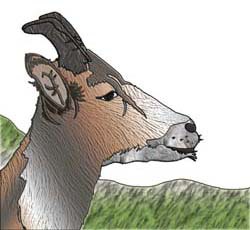From Neolithic times until today
Small ruminants, goats and sheep, are the descendents of wild ancestors which lived in the “Fertile Crescent”, a Middle Eastern region straddling parts of modern day Turkey, Iraq and Iran. Goats descended from the wild goat (Capra aegragus) while sheep descended from the Urial (Ovis orientalis). They first began to be domesticated by early farmers-herders around 10 000 BC during the Neolithic period. Over the centuries, these animals remained an integral part of people's daily lives and accompanied them on their migrations, eventually spreading to Europe, Africa, and Asia thanks to their extensive capacity to adapt.
At present, there are over 200 breeds of goats and nearly 900 breeds of sheep in the world.
Although sheep are more demanding than goats, the two species often are combined in mixed herds. |  Goats and sheep figure prominently in many mythologies and religions. |





